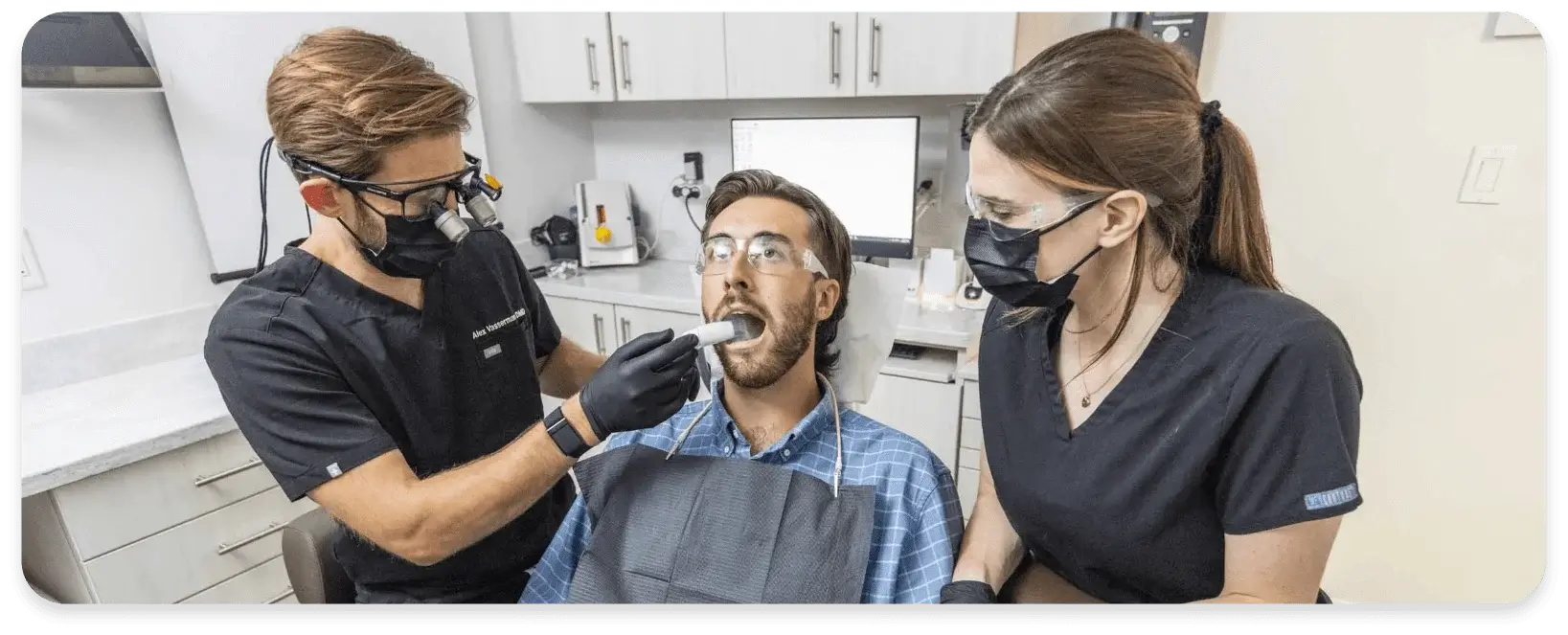Your cart is currently empty!

Dental Safety: How FASTCheck15™ Simplifies DUWL Infection Control

Infection control is a cornerstone of patient safety in dental practices, yet one of the most overlooked aspects is waterline safety.
In a recent interview, Kevin Henry, Editor in Chief of DrBicuspid, had the pleasure of discussing this crucial topic with Chanda Chatham, former Sterisil® Product Line Manager at Solmetex. Their conversation revolved around the innovative FASTCheck15™ product and its potential to transform dental waterline testing. Here’s an in-depth look at the discussion and the significant implications for dental practices.
The Genesis of FASTCheck15™
FASTCheck15™ was developed to address a significant challenge in dental practices: the complexity and delayed results of existing waterline tests. Chanda explained, “The industry is very confused with a lot of different IFUs, and testing is a big portion of it.” Traditional tests often have a long lead time between conducting the test and receiving the results. FASTCheck15™ simplifies this process by providing results in just 15 minutes, allowing practices to verify the safety of their water on the same day.
Empowering Dental Assistants
Infection control often falls under the purview of dental assistants, many of whom are new to the field and learning on the job. FASTCheck15™ is designed with simplicity in mind, making it accessible even to those with limited experience. Chanda likened the process to taking a COVID test, with clear, easy-to-read results. This ease of use is crucial in busy practices where dental assistants juggle numerous responsibilities.
Addressing Misconceptions
One common misconception is that using an antimicrobial bottle means waterline testing is unnecessary. Chanda emphasized that water chemistry can change once it passes through the waterlines, making testing essential. “The test is really the best way to make sure that the treatment is actually safe for the water in the waterlines that goes to the patient,” she noted.
The Role of Water Quality
Water quality varies significantly depending on the location, impacting the effectiveness of dental waterline treatments. Chanda highlighted the importance of testing the water that reaches the practice, as it travels through municipal pipelines and building infrastructure, potentially altering its composition. Products like the Sterisil® silver ion straws are formulated based on the total dissolved solids in the area, ensuring optimal water treatment.
Marketing Potential
Using FASTCheck15™ can also serve as a powerful marketing tool for dental practices. Chanda pointed out that patients are increasingly aware of water quality issues and would appreciate knowing that their dentist takes waterline safety seriously. “I would want to know that they’re taking care of the water that I eventually will come in contact with,” she said. Highlighting rigorous infection control measures can differentiate a practice and build patient trust.
Simplifying Infection Control
FASTCheck15™ not only provides quick results but also alleviates the fear of failing waterline tests. Chanda described it as an “awareness product,” designed to make testing more frequent and less daunting. The simplicity of the test means dental assistants can conduct it without interrupting their workflow, ensuring that practices maintain high standards of waterline safety without sacrificing productivity.
The Bigger Picture
Dental unit waterline safety is an often-overlooked aspect of infection control. While practices focus on sterilizing instruments and disinfecting surfaces, the safety of the water used in procedures is equally important. Water is a daily necessity in dental practices, serving as a coolant for handpieces and other equipment. Ensuring that waterlines are clean and safe is essential for preventing infections and maintaining patient safety.
Conclusion
FASTCheck15™ represents a significant advancement in dental waterline safety, making it easier for practices to conduct regular testing and ensure the safety of their water. By simplifying the testing process, FASTCheck15™ empowers dental assistants, enhances patient trust, and integrates seamlessly into the busy workflow of dental practices. As Chanda Chatham highlighted, understanding and maintaining waterline safety is a critical component of comprehensive infection control. For dental professionals, adopting innovative solutions like FASTCheck15™ is a proactive step towards safeguarding patient health and elevating the standard of care.
Share this post:

Related Posts





